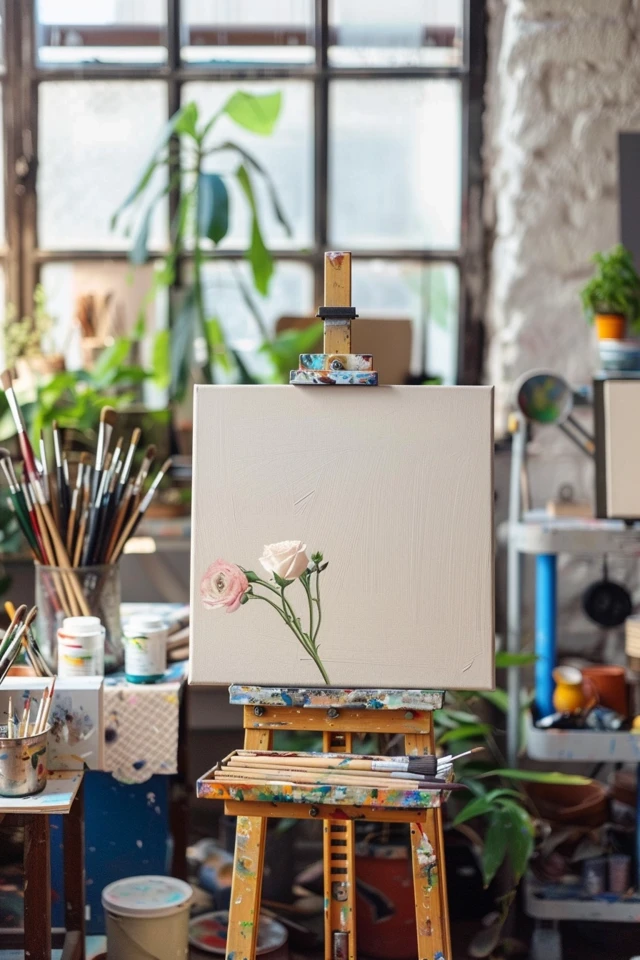When it comes to creating the perfect beige paint color, there are a few key factors to consider. In this DIY beige paint tutorial, I’ll guide you through the process of mixing colors to achieve the desired shade. Whether you’re working on a home renovation project or a creative art piece, these neutral paint color techniques will help you achieve the perfect beige hue.
Key Takeaways:
- Choosing the right colors is crucial when creating beige paint.
- Consider the colors of the other elements in the room when selecting shades.
- Mixing paint and dye in specific ratios can help achieve the perfect beige shade.
- Test the color on a small surface before applying it to your project.
- Have fun experimenting with different techniques and materials to make your own unique beige paint.
Choosing the Right Colors
When embarking on a beige project, it is crucial to carefully consider the colors of the other elements in the room, such as walls, furniture, and fabrics. By choosing the right colors, you can create a harmonious and inviting space. But how do you go about selecting the perfect hues?
One helpful tool is the color wheel. It allows you to visualize how colors relate to one another and identify complementary or contrasting combinations. By understanding the color wheel, you can confidently choose colors that will enhance the overall aesthetic of your beige project.
Furthermore, it’s important to consider the role of lighting in the room. Different light sources can significantly alter how colors appear, which can ultimately impact the overall mood of the space. Natural light, for example, tends to showcase colors more accurately, while artificial light can introduce subtle color shifts.
By taking into account the lighting conditions and the color wheel, you’ll be able to make informed decisions when choosing colors for your beige project. Achieving the perfect balance of colors will help you create a warm and inviting ambiance that reflects your personal style and taste.

Mixing Paint and Dye to Make Beige
Mixing paint and dye to create beige is a simple process that requires attention to detail. When mixing paint, choose the right colors and types of paint, such as acrylics, oils, or watercolors. A common combination for a neutral beige is one part yellow, one part red, and one part blue. Gradually mix the colors together on a palette until the desired beige shade is achieved.
Similarly, when mixing dye, choose two colors – a light and a dark – and experiment with different ratios to create the perfect beige shade. The type of dye used will depend on the material you are dyeing. It’s important to test the color on a small swatch before applying it to your project.
- Choose the right colors and types of paint.
- Measure one part yellow, one part red, and one part blue.
- Gradually mix the colors together on a palette.
- Test the color on a small surface to ensure it matches your desired beige shade.
When mixing dye, follow these steps:
- Choose two colors – a light and a dark shade.
- Experiment with different ratios of the two colors.
- Test the dye on a small swatch to see the resulting beige shade.
Remember, mixing paint and dye to create beige is a creative process. Feel free to experiment with different paint blend ratios and mixing techniques to achieve the exact color you desire.

Conclusion
Creating your own beige paint is a fun and rewarding DIY project that allows you to customize the color to perfectly suit your needs. By following these homemade beige paint instructions and utilizing the best beige paint mixing tips, you can achieve a beautiful shade of beige that adds warmth and sophistication to your space.
Start by carefully selecting the right colors that complement beige, considering factors such as the colors of other elements in the room and utilizing the color wheel as a helpful guide. Once you have chosen your colors, follow the step-by-step beige paint blending process, taking into account the ratios of each color and experimenting with different mixing techniques.
Remember to test your beige paint on a small surface before applying it to your project to ensure you have achieved the desired shade. This will allow you to make any necessary adjustments and ensure the final result matches your vision. With these homemade beige paint instructions and best beige paint mixing tips, you’ll have the knowledge and confidence to tackle any DIY project that calls for the elegant and versatile color of beige.


